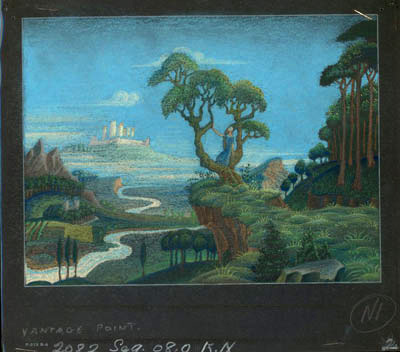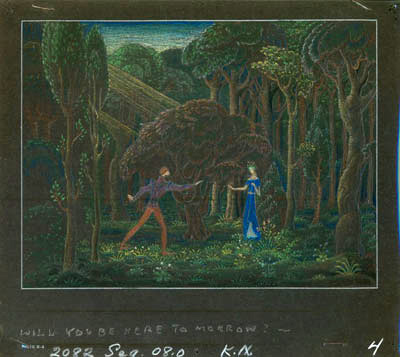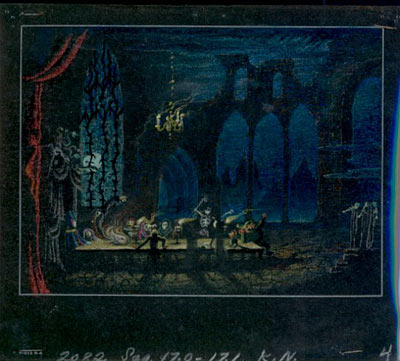I used to wonder where precisely Walt Disney's first 2719 Hyperion Ave. studio was located, and what it looked like. Since reading about it first in the 1970s in Dave Smith's article in Michael Barrier's great Funnyworld, I spent hours looking at photos, aerial photographs, maps etc, until I found I had a pretty good impression.
My aim here is to pass some of that on to you, as I have found there was an interest in this since I posted this image of the staff with their new Charlotte Clark dolls on my Facebook page:
Looking through Cecil Munsey's Disneyana, it appears to me that the "funny looking" Mickey with the button eyes is actually an example of the 1930 British-made pose-able Mickey by the Dean's Rag Book company of London.
First, the WHERE. Here is the front of the Gelsons parking lot, with the original plot of the studio indicated in a blueish hue. We see the very small building, the back yard that has a car shed does not even reach the current Gelsons entrance.
Some years ago someone posted a link to some images taken in the neighborhood, and this perceptive person spotted the studio in the area at the time. The wide avenue is, of course, Hyperion.
A plan of the building was included in Dave Smith's article in Funnyworld. It did, however, not completely follow the real outlines which I found in aerial photos from this area in 1927, so I pushed and pulled it a bit in Photoshop.
[Addition 4/1/2015: After reexamining the floor plan for years, I am now certain there was no gangway between I&P and the animation dept. Relative sizes of the different rooms and departments are also...relative.]
So let's see it up close:
The entrance is in the middle of the building. The map in Funnyworld, created by Floyd Gottfredson and checked by Wilfred Jackson, if my memory serves me right, shows Walt's office to the left of the entrance, Roy's to the right. After entering the main door, though, there is a small partition entrance to the left that leads to the animators working on the Mickey Mouse shorts. (Dick Lundy, Norm Ferguson, Jack King, Burt Gillett, Merle Gilson and Ben Sharpsteen).
If at the place where this photo is taken, we glance to the right, we see, next to Ben's desk, the glass door leading to Walt's office. If we move to the left, however, we find the Silly Symphonies unit.
Notice the arc in the background? Let's walk around to the left of Cannon and Cutting's desks and have a look.
It's the ink and paint department! Same ceiling arc we saw previously, see? The big window on the right - it's the right of the facade windows, with the scalloped awning seemingly pulled up. The old wooden house that is still there on the other side of Hyperion can be seen through it. Through the east windows we see the hill on the other side of the Avenue. What we do not see is - Roy's office. Was he there before but they knocked out the wall? In his place, in the front on the desk on the right in black is the supervisor of the department, Lillian Disney's sister Hazel Sewell. If we go to the left, we meet her husband, Bill Cottrell, at the camera.
Now, there is some time between these images. The negative numbers are only maybe 50 or 100 apart. (Do the others still exist? Will anyone show me?) But where we met Ub Iwerks between the animators (thus being before February 1930), here we see a Mickey short being shot around what must be August/September 1930, because - it is
The Gorilla Mystery. The draft is from September 1930, it was released 10/10/30. Here's how I found out:
A frame grab from the film with a part of the above photo that I corrected for perspective to see what it was inlaid. But: the back of the photo is dated 2/14/31.
We do know another image of an early Mickey animation camera:
Possibly this one was situated where the "Gotffredson map" indicated "camera." [I have a hard time fitting it in, however!] A fun note: this image shows a calendar of July 1930. The image is found in Finch, The Art of Walt Disney, as from 1929. Some of the cells seen in this image are from the film The Shindig (CM-5) that premiered 7/29/30.
The other camera room, where the opening title card for The Gorilla Mystery was being shot, we saw looked out onto the same hill that the ink and paint ladies looked out onto, and we can see their inking and painting tables through the door on the right, so it must have been located in the area that the "Gottfredson map" called "storage."
[Addition, 7/1/2017: I have now been able to establish that BOTH these camera images were taken in the same camera room in the 1,410 sq.ft. rear 2nd. addition to the first building, built April-June 1930! So these photos were "look at our fine new camera room" images! The storage/camera room in the Gottfredson floor plan did not exist in the original building!]
Finally, there is one more interesting occurrence that captures everybody's mind: the first screening of the first scenes of Steamboat Willie. Well, on the map I have indicated in dark red, where I deduce Roy was operating the projector outside the back of the building, where the audience must have been (around where Johnny Cannon's desk was) and where the curtain must have been stretched. This must have been around where the divider between the Mickey and the Silly units were. The noise-making animators were behind the glass door in Walt's office, playing through a telephone system that Ub had "fixed."
Here is the floor plan again, but with in green an indication of the camera angles for the images shown above.
Have a good look at the floor plan. It fills the left Gelsons parking lot entrance pretty well precisely. Then tell yourself: it is less than two cars wide - four parking spaces deep! Here were made Alice films from 1926. ALL of Disney's Oswalds. And all Mickeys and Silly Symphonies until somewhere in 1931 with only a few additions until then: the little building filled out the space towards the organ pipe factory (1929) and grew six feet towards the street and stretched about 50% in depth (1930). But otherwise it remained relatively unchanged.
Of course, in 1931 the expansions began for real, with a whole new building with its eight-sided turret, Walt's new office overlooking the courtyard, new wings, etc. etc. Then, of course, the studio moved to Burbank 1939-40. The last remains of this earliest building was
finally destroyed with all other buildings on the lot in early October 1966. Two and a half months later - Walt Disney himself was no more.
David Lesjak has told me he is writing a complete history of the buildings and the area, and I am very much looking forward to it, for if it is anywhere near as well reserched as his great blog postings, it will be a must-have doozy! In the mean time I hope the above brings this important era in the Walt Disney studios history a bit to life.
Labels: Other Disney





















































